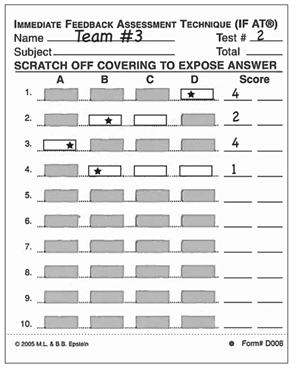
Dilani's group collaborating and trying to come to consensus about their answers.
Published September 23, 2016, last updated on October 12, 2017 under Voices of DGHI
By Dilani Logan, 1st-Year Master of Science in Global Health Candidate
The first few weeks of classes are always a bit of mystery. As months of excitement quickly transition towards unbridled nervousness, you find yourself plagued by many questions: Will I make new friends? Will I like my classes? And if you’re new to a particular place, don’t forget about getting settled in!
Luckily, within the first couple of days, most of these questions were answered quickly at Duke. While it wasn’t—and won’t always be—easy, in a place as welcoming as DGHI and a city as vibrant as Durham, I’ve come to realize that all those worst case scenarios I’d been dreaming up were nothing more that nervous fallacies.
With those early concerns behind me, it quickly became time to immerse myself in my new role as a graduate student. And with that, came the daunting task of figuring out how to study and handle the workload.
As a self-proclaimed life-long learner, I thought I had I already had tackled, perfected and internalized all the study strategies that worked best for me.
However, when two of our professors, Dr. Liz Turner and Dr. Eric Green, introduced the “flipped” method of class in our biostatistics and epidemiology and global health research courses, I realized I hadn’t seen it all.
So, you might be wondering: what is this “flipped” method?
Prior to each class, students are given a “module” to learn on their own with links to readings, videos, practice problems and learning outcomes. With methods of information dissemination that appeal to each type of learner and an ability to learn at your own pace, this method enables learners to fully absorb and understand the content. After learning the module individually, students are tested once a week using Individual and Team Readiness Assessments (coined IRA and TRA, respectively).
For the IRAs, the instructor hands out quizzes and students enter their answers on clickers—electronic devices that resemble remote controls.

The "clicker" (Image credit: https://www1.iclicker.com/products/iclicker-2)
Although the answers aren’t revealed immediately to the class, the clickers enable instructors to immediately display a graph of the answers chosen by students and keep track of which students selected which answers.
Following this mini-quiz, students get into teams to collaborate and come to consensus about their answers. Once the team agrees on an answer, they use a “scratch card” to check their answers.

The "scratch card" (Image credit: http://cis.apsc.ubc.ca/team-based-learning/if-at-aka-scratch-cards/)
Students literally scratch off the letter that corresponds to their agreed-upon answer. If they’re correct, the field will reveal a small star. If they’re incorrect, they can scratch off other answers until they eventually get the correct answer. If they select the right answer on the first try, the team receives five points. With each wrong scratch, the team receives fewer points. The TRA almost feels like a game—but it actually pushes us to work together to solve problems.
These quizzes are followed by take-home application activities that take the concepts one step further. After attempting the answers at home, we learn the correct answers and methods to each problem by discussing the assignment within our groups during the subsequent class. Again, through hands-on, team-based, problem-solving techniques, we actively participate our learning. And through every step, our professors and TAs are also always right there to help guide, support and direct our thinking.
While this process seemed daunting at first, I’ve come to realize that it’s actually quite the opposite. By being tested in a low-stake environment (each IRA and TRA is worth a small fraction of our grades), we’re pushed to think critically about concepts without the burden of stress. In addition, working in teams that have been strategically selected to represent a wide range of academic backgrounds, we’re developing crucial teamwork and collaborative skills that we’ll use outside the classroom.
While I didn’t expect to be using this method in graduate school, I can’t help but wish that my instructors earlier in my academic career had adopted this approach! Not only do I feel that I have a better grasp on topics that I would otherwise struggle with, but I also feel that we’re building key interpersonal skills that will support us beyond our coursework.
It’s hard to believe that we’re only a few weeks into our program, but considering all of the innovative and transformative learning experiences we’ve already been exposed to, I simply cannot wait to see what the next two years hold in store!
